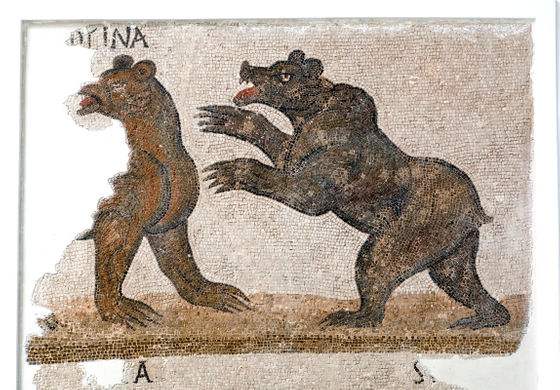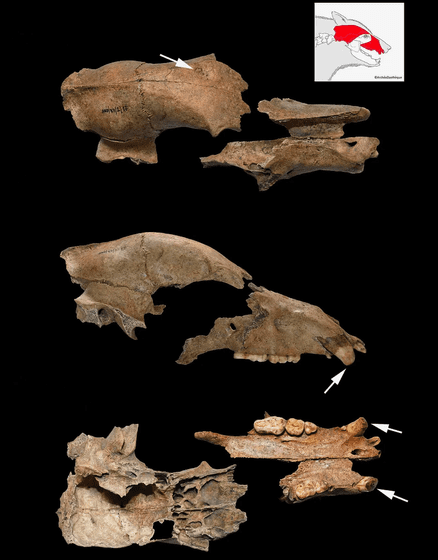Possible evidence found that bears fought in Roman arenas

For the ancient Romans, spectacles held in amphitheaters were a form of thrilling entertainment, with fights pitting slaves and criminals against each other, as well as humans against beasts. New research has found evidence that brown bears may have been introduced into the arenas.
A spectacle of the Roman amphitheater at Viminacium: multiproxy analysis of a brown bear skull | Antiquity | Cambridge Core
The Skull of an Ancient Brown Bear Tells a Story of Brutality and Abuse at the Hands of Roman Entertainers
https://www.smithsonianmag.com/smart-news/the-skull-of-an-ancient-brown-bear-reveals-its-abuse-at-the-hands-of-roman-entertainers-180987310/
Fossil skull provides first direct evidence that bears fought in Roman amphitheaters
https://phys.org/news/2025-09-fossil-skull-evidence-fought-roman.html
In 2016, fragments of a bear skull were found during excavations of a building near the Viminacium amphitheatre in Serbia.
Founded in the 1st century as a military outpost, Viminacium grew into a major city within just a few hundred years, with a population of up to 40,000. Like other Roman cities, Viminacium had an amphitheater, and gladiatorial contests provided daily entertainment for its citizens.
The Romans began fighting humans against animals in the 3rd century BC, capturing wild animals such as elephants, crocodiles, tigers, and lions in Sicily and North Africa and transporting them to Rome. After transporting them, many of the animals were kept in zoos, starved to submission, and cruelly trained to perform tricks. The Romans then released the animals into amphitheaters and pitted them against humans.

Until now, there has been little conclusive evidence of documented battles between humans and beasts, but it wasn't until 2025 that the first skeletal evidence of animal combat was discovered: lion bite marks were found on the pelvis of a gladiator excavated in England.
Additionally, ancient records contain numerous instances of brown bears being brought into fighting arenas, suggesting that they may have been used to fight humans, but again, no physical evidence of such activity has ever been found.

by
However, when the skull of the bear was discovered, it was discovered that the bear may have been used in a fighting arena.
The bear in question was a 6-year-old male brown bear that lived approximately 1,700 years ago. It had suffered a fracture to its frontal bone, and although there were signs of healing, it had developed an infection that had led to osteomyelitis.
Researchers believe the bear likely suffered trauma from a blunt object, such as a long spear, and likely died from an infection caused by the wound.
The researchers also found damage to the brown bear's teeth and jaw, including excessive wear on its canine teeth, likely caused by biting the bars of its cage, a common behavior seen in captive bears. 'This behavior may have been caused by anxiety, as well as poor nutrition and a lack of opportunities to brush their teeth in a natural environment,' the researchers wrote.

Based on this evidence, it is believed that this brown bear was likely kept in captivity for an extended period of time and participated in multiple shows in the arena.
'While we cannot say for sure whether the bear died directly in the arena, it is highly likely that the injuries sustained during the show and subsequent infections contributed significantly to its death,' said lead author Nemanja Markovic, an archaeologist at the Belgrade Archaeological Institute.
Related Posts:







